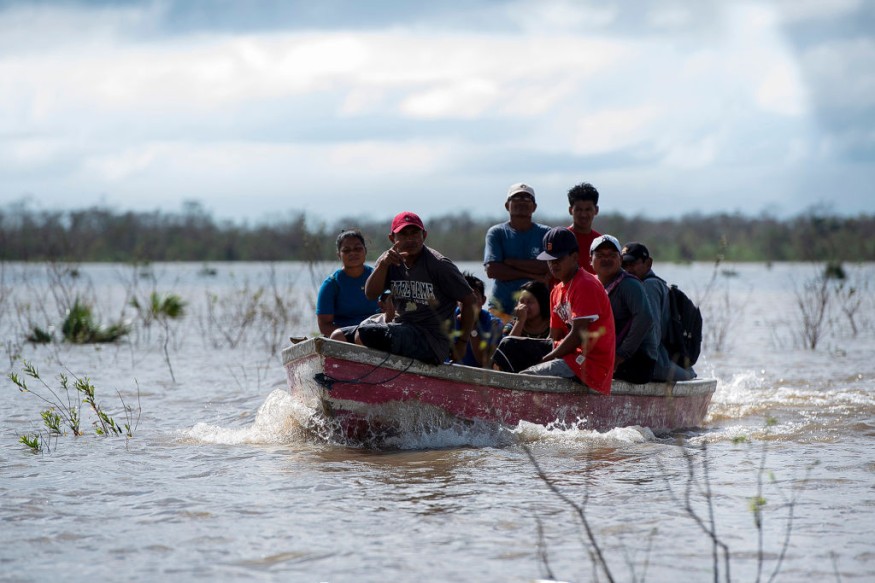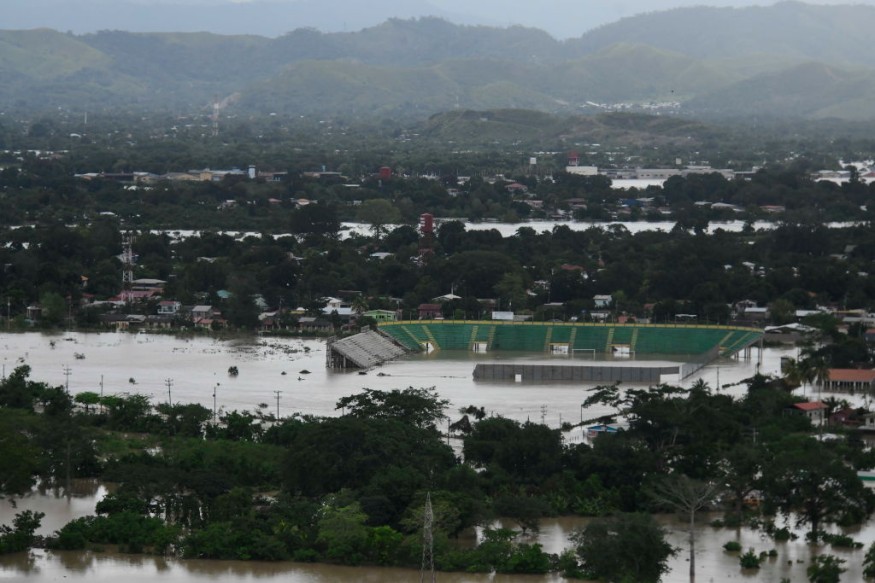The death toll from Hurricane Iota's wrath in Central America has reached at least 40 people, and the numbers are expected to grow as rescuers try to reach isolated communities.
Most of the reported deaths are from Nicaragua and Honduras.

READ: Hurricane Iota Brings Death and Devastation Across Central America
More death toll and devastating damages in Nicaragua
On Wednesday, images of piles of lumber tossed by winds, home, and concrete walls crumbled into pieces by Hurricane Iota, the second Category 4 storm to hit Nicaragua's Caribbean coast in a span of two weeks.
The death toll was reported 18, and the numbers are still expected to rise. Rescue operations are still on-going. The victims are from across the country and were swept by inundated rivers or were buried in landslides.
Vice President Rosario Murillo said that two people are missing, and at least nine died in a massive landslide on the Macizo de Peñas Blancas, a mountain in Matagalpa province. Media access to the area was, however, blocked by authorities.
️
Lugar del deslizamiento en La Dalia, Macizo Peñas Blancas donde hasta el momento se sabe de 4 muertos. pic.twitter.com/pgp4wZm0Cc — CD-SINAPRED Oficial (@cdsinapred) November 18, 2020
️ Lugar del deslizamiento en La Dalia, Macizo Peñas Blancas donde hasta el momento se sabe de 4 muertos. pic.twitter.com/pgp4wZm0Cc — CD-SINAPRED Oficial (@cdsinapred) November 18, 2020
According to Miguel Rodríguez, who works on a ranch near the site, the landslide became like a river and swept the five homes, which are likely with five families on its path. More than 100 rescuers were sent to the site. Rescue operations are hampered as some roads are washed out, and downed trees are blocking the road.
According to Rolando José Alvarez, the Roman Catholic bishop of Matagalpa, priests are being sent to the area.
More than 160,000 people were evacuated in Nicaragua, and more than 65,000 are still in government shelters as of late Wednesday.
READ ALSO: Hurricane Iota May Weaken to Tropical Storm But Landslides and Flooding Remains a Threat
Deaths and Damages in Honduras
Government officials said that 15 have died in Honduras.
In western Honduras, four landslides killed more than a dozen people. Eight members of two families were among the victims in San José Manuel de Colohete in the Lempira province.
More than 96,000 people evacuated their homes. More than 73,000 of the evacuees are in 822 government shelters.
Authorities report that at least 27 homes have been destroyed, and 153 homes have been damaged.
Bridges and roads were damaged, cutting off many communities.
In La Lima, home to 40,000 people, at least 90 percent were underwater on Wednesday. Many of these residents are still recovering from being trapped on rooftops when Eta hit and had to wait for days to be rescued.
San Pedro Sula, the country's economic hub and home to about 2 million people, is the hardest hit.
The search for Iota victims resumed on Thursday despite the warning of authorities the dangerous landslides are still possible as the grounds are extremely saturated after Hurricanes Iota and Eta.
The exact death toll and damages caused by Hurricane Iota is difficult to pin down as the numbers are still growing.

READ NEXT: Hurricane Iota Hits Nicaragua as Category 4 Storm
Check out for more news and information on Hurricanes on Nature World News.
© 2025 NatureWorldNews.com All rights reserved. Do not reproduce without permission.





